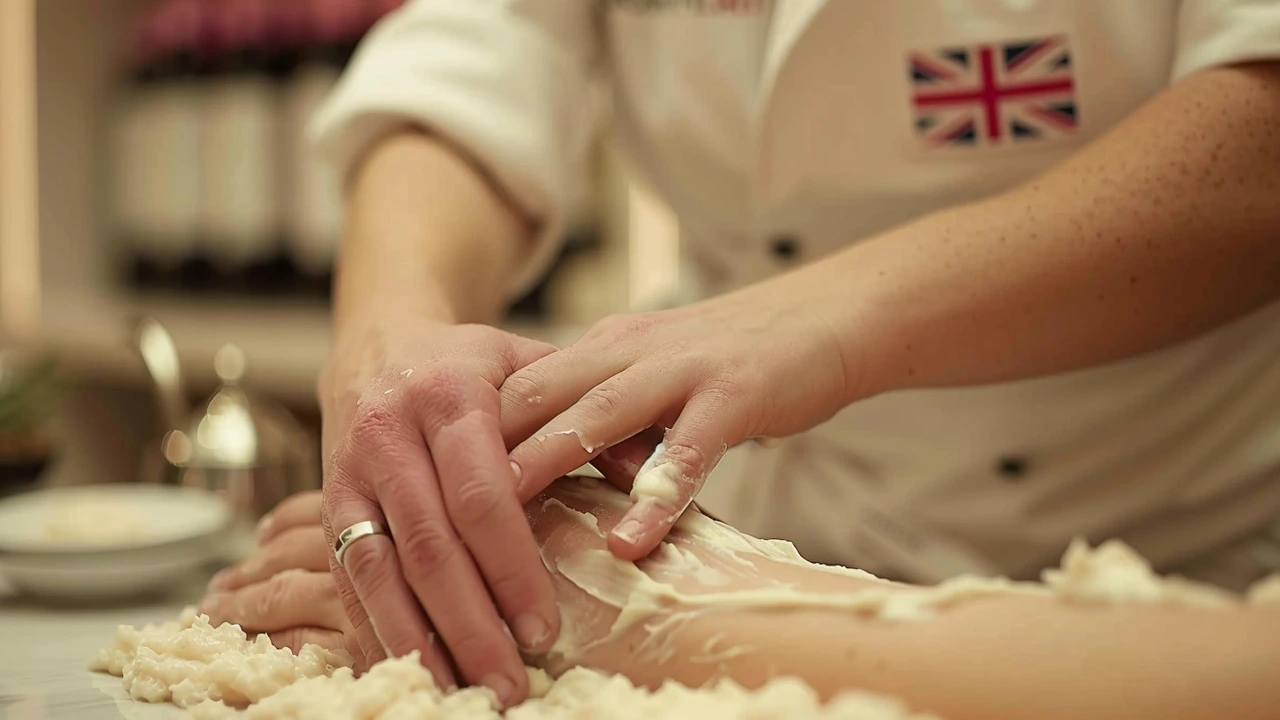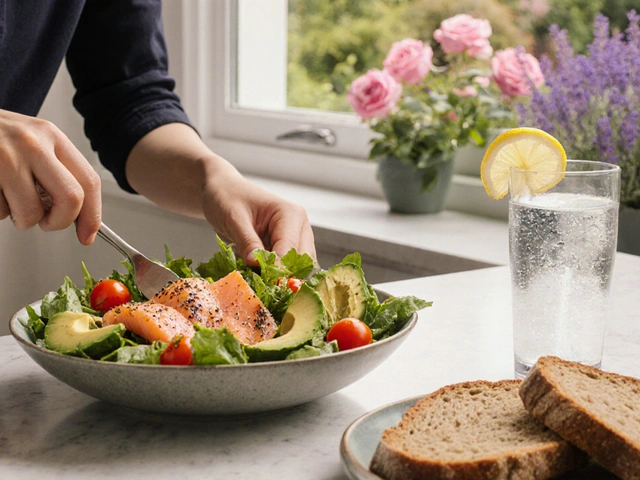Canine Wellness February 2024: Practical Guides & Hands-On Tips
February brought a batch of clear, usable guides aimed at improving your dog's health with hands-on care and easy routines. These posts focus on massage, pressure techniques, gut support, and gentle therapies you can learn at home—always alongside your vet or a certified pro.
First up: acupressure and weight. One article explained simple acupressure points and how steady, gentle pressure can support appetite control and metabolism in humans. For dogs, the takeaway is careful: some acupressure spots translate well to pets but technique and pressure differ. Tip: learn from a certified animal acupressure therapist and never force a dog into a position it resists.
Hands-on massage & bodywork
Several guides covered massage styles you can adapt for dogs: Shiatsu, myofascial release, and basic healing touch. Shiatsu uses steady thumb pressure along energy lines; with dogs, shorter sessions and softer pressure work best. Myofascial release targets tight spots in the connective tissue—use slow, gentle stretches and watch your dog's reaction. If your dog flinches or pulls away, stop and consult a vet.
Practical tip: start with 3–5 minute sessions after a walk. Use calm strokes, speak softly, and focus on areas your dog enjoys—shoulders, chest, base of tail. Keep sessions positive with treats and praise.
Therapies, stress, and everyday wellness
The archive also looked at creative arts therapies and mental health. While music, touch, and routine are aimed at humans, dogs respond to rhythm and calm voices. Try low-volume classical or steady beats during thunderstorms or vet visits. A short daily routine—walk, play, brief massage—reduces stress and strengthens trust.
Reflexology and snail-sliming pieces examined niche trends. For pets, reflexology ideas can inspire gentle paw handling exercises to improve circulation and tolerance for grooming. Skip exotic skin treatments like snail slime unless a veterinary dermatologist approves them for your dog.
Gut health got a clear, practical article that matters to pets too. Balanced diet, consistent feeding times, and vet-approved probiotics support digestion. If your dog has persistent loose stool or poor appetite, get a stool check and discuss tailored probiotics or diet swaps with your vet.
Mental health and behavior were covered with a focus on recognizing signs and managing them. Dogs show stress as pacing, yawning, lip licking, or changes in sleep. Keep a short behavior log for your vet to spot patterns—time of day, recent diet changes, or new people can reveal triggers.
Finally, the month highlighted safety: always vet-check before starting any new therapy, use certified trainers or therapists for bodywork, and keep sessions short and positive. Small, consistent steps—short massages, calm music, steady routines—make a bigger difference than big, rare interventions.
Want a quick plan? Try this: 5-minute calming stroke after walks, one gentle pressure-point session per week with a pro, daily consistent meals, and a two-minute paw-handling drill to ease grooming. Track how your dog responds and adjust with your vet's guidance.

Harnessing Acupressure Points for Weight Loss: A Comprehensive Guide
Discover the ancient practice of acupressure as a holistic approach to weight loss. This article explores key acupressure points that may aid in shedding unwanted pounds, enhancing metabolism, and promoting overall well-being. Through a detailed examination of how to apply pressure to these points, alongside expert insights and proven techniques, readers will gain a thorough understanding of how to incorporate acupressure into their weight loss journey effectively.

Enhancing Wellness Through Creative Arts Therapies: A Guide
Creative arts therapies are innovative approaches to improving mental health and overall well-being. Incorporating these therapies into daily wellness routines can provide numerous benefits, from reducing stress to boosting creativity and self-expression. This article explores the various types of creative arts therapies, including art, music, dance, and drama therapy, and offers practical tips on how to integrate them into your life. Perfect for individuals looking to enhance their mental and emotional health in a unique and enjoyable way.

Reflexology and Diabetes Management: A Detailed Guide
This detailed guide explores how reflexology, a practice focused on applying pressure to specific points on the feet, hands, and ears, might benefit diabetics. It delves into understanding the potential health benefits reflexology may offer to those managing diabetes, including improved blood sugar levels and reduced stress. The article also provides practical advice on incorporating reflexology into diabetes management, highlights the importance of professional consultation, and suggests precautions for the most effective and safe experience.

Unlocking Gut Health Secrets: A Comprehensive Guide to Optimizing Digestive Well-being
This article dives deep into the fascinating world of gut health, providing a comprehensive understanding of how a balanced digestive system can lead to overall well-being. From exploring the complex ecosystem of the gut microbiota to offering practical advice on fostering a healthy digestive environment, this guide covers everything you need to know. Discover the significant impact of diet, lifestyle, and probiotics on your gut health and learn actionable tips for maintaining a happy tummy. Get ready to unravel the science behind gut health and take the first step towards a healthier, happier you.

Exploring Healing Touch Therapy: A Holistic Approach to Wellness
Discover the power of Healing Touch therapy in this comprehensive article. From understanding its origins and principles to uncovering the science behind this energy-based approach, readers will gain a new perspective on health and healing. The article delves into how Healing Touch can complement traditional medicine, details practical applications, and shares tips for integrating this therapy into daily life. Get ready to explore the transformative potential of Healing Touch and how it contributes to overall wellness.

Comprehensive Guide to Understanding Mental Health Disorders: Symptoms, Types, and Management Strategies
This article dives into the complex world of mental health disorders, aiming to shed light on the various types, symptoms, and management strategies. From discussing the importance of recognizing early signs of mental distress to exploring effective ways of dealing with mental health issues, the guide provides readers with valuable insights into navigating the challenging landscape of mental health. Emphasis is placed on understanding the spectrum of mental health disorders, with a focus on destigmatizing these conditions and encouraging a more empathetic approach towards those affected.

Shiatsu Massage: The Unexplored Jewel of Alternative Healing Practices
Uncover the ancient secrets and modern benefits of Shiatsu, a Japanese massage technique that has emerged as a hidden gem in the realm of alternative medicine. Through gentle but firm pressure, Shiatsu not only offers relaxation but also aims to stimulate the body's self-healing capabilities. This comprehensive guide dives deep into the principles of Shiatsu, explores its health benefits, offers practical tips for a session, and even discusses how to incorporate these techniques into your daily routine for improved holistic health.

Exploring Snail Slime Massage: Is This Beauty Trend Right for You?
Delve into the exotic world of snail facial massage, a skincare trend that's been garnering attention worldwide. This article uncovers the science behind snail slime and its purported benefits for the skin. Discover how this unique treatment promises to rejuvenate, moisturize, and heal the skin, making it a sought-after addition to beauty routines. Learn about the process, the potential risks and rewards, and how to incorporate snail facials into your skincare regimen for optimal results.

Unlocking Wellness: A Deep Dive into Myofascial Release Therapy Benefits
Delve into the transformative world of Myofascial Release Therapy, a breakthrough approach in physical therapy that promises not just pain relief but a host of wellness benefits. This therapy focuses on relieving tension and pain by releasing the tightness in the fascia, the connective tissue around muscles and organs. Through this article, readers will explore what Myofascial Release entails, the science behind it, its extensive benefits, and practical tips on implementing these techniques. The journey through Myofascial Release Therapy is not just about combating pain, it's about embracing an improved quality of life.




